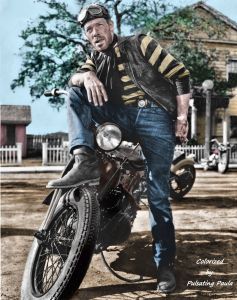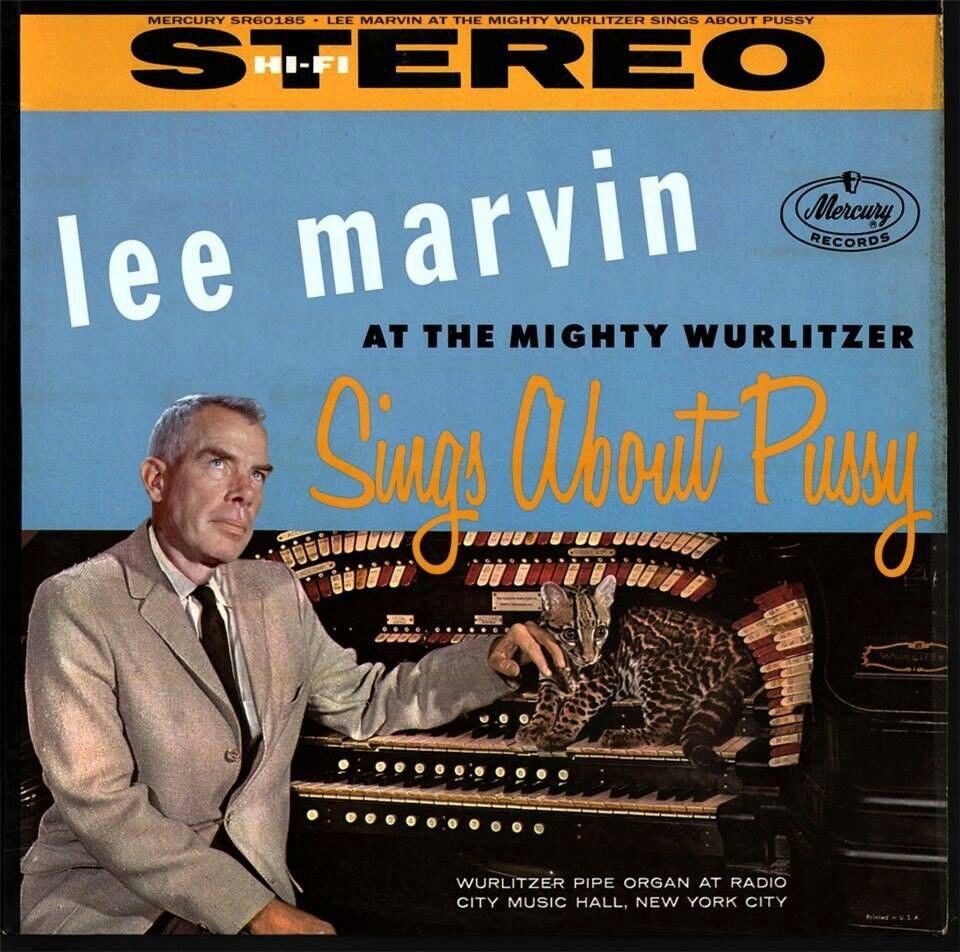“Everyone was out of their collective minds.” (from Conversations With Joan Crawford; Roy Newquist).
It’s a folly, all right. Watching The Ice Follies of 1939, I felt like that fellow at the end of The Bridge on the River Kwai, the one who runs around muttering, “Madness, madness,” after the bridge blows up and this eerie silence settles over the dust and rubble. Kinda like that.
I’m not alone in my opinion. Joan Crawford’s assessment of the film, quoted above, agrees with mine, and she oughta know: she had to star in the thing. Being that she was a contract player at MGM, which produced this frozen bit of flummery, she probably had little choice when ordered to strap on a pair of blades and wobble onto her ankles with all the aplomb of a penguin in pointe shoes. Anyone who, on seeing the movie’s poster, shoved money across the theater box-office threshold expecting to see Joan glide across hardened liquid like Tinkerbell in peplums was gonna be mighty disappointed.

I can just picture how this collapsed bridgework of a film may have come about. MGM capo Louis B. Mayer must’ve woken up one morning, stared across Hollywood Boulevard at those glittering streams of money pouring like a winter storm into the coffers of 20th-Century Fox, and then asked himself, “What has Darryl Zanuck got that I ain’t got?” The answer came twirling back in a whoosh of blades and chipped ice: Sonja Henie. Beginning in 1936, the small but mighty Miss Henie, after winning three-in-a-row Olympic gold medals, went on to win the hearts, and pocketbooks, of the American public. Her cinematic ice spectaculars, combining skating, music, comic relief, choreographed rink routines, and enough dimples to equal those of that other tiny Fox blonde, Shirley Temple, collected more ice at the box office than a Zamboni in the Yukon. And under a Fox contract no doubt as ice-cold solid as a continental shelf hugging the Antarctic coast.

And what did L.B. have to compete with Zanuck’s prize? Not much. Oh, sure, MGM had its own gold-medal Olympian: swim champ Johnny Weissmuller, displaying as limber a length of leg in his loincloths as did Miss Henie in her boots and tights. However, Weissmuller’s talents lay below the water, not above it. There’s more ice in a dry martini than in his films. Besides, by 1939, Weissmuller’s Tarzan flicks had sunk into the B-movie swamp; what’d begun as an exotic and racy sex-and-swinging-vine series had, by the late 1930s, turned into kiddie-matinee filler. Not to mention that Weissmuller’s once-taut Olympian physique was softening into flab, the way a snowman thaws into slush under a bright winter sun.

Whereas the pertly trim Henie was, in her films, A-list prime material. She was given the best Fox could afford in her dazzling ice numbers, made up and costumed like a cover girl, while paired with such glamour guys as Tyrone Power and Don Ameche. Henie was that weird, only-in-Hollywood phenomenon, the One-Talent Wonder: a star whose single, and singular, gift is honed, polished, enhanced, and exhibited in film vehicles carefully constructed to flaunt that talent but not tax the limited or even non-existent acting skills of its performer when otherwise engaged. You’d think the public would have wearied of what, basically, was a lot of zipping around on glossed-up frozen water. But Henie, making two films a year, was, per Laura Jacobs, a “monster at the box office,” and still going strong in 1939 (even making the cover of Time Magazine). As an actress she had the emotive range of a Kewpie doll; but when on ice she was as big and unstoppable as an avalanche on a roller coaster.

Can YOU Spot the Difference?
Bring on a petite avalanche in twirly skirts, who cranks out money like an ice maker on steroids, and other movie moguls will take notice. And one of them, I’ve no doubt, was Louis B. Mayer. As fond of simoleons as the next studio head, L.B. must’ve been watching Sonja rake it in across the Fox balance sheets, and then started brooding. Where, oh where, could he get his own Sonja Henie? Where could he find a pair of blades for MGM that could ice ‘em at the box office as well or better than Fox’s Pavlova of the Ice?
You get the picture. MGM may have had more stars than there are snowflakes in the wintry heavens, but it hadn’t one who could strap on a pair of blades and whip a double axel to music. Not even Weissmuller and a chimp were enough to cut it, ice-wise.

Nor could these guys.
If you don’t have a skating star for your skating pic, then make your skating pic without one. That, in effect, was Louie’s solution. He made a skating film with stars who couldn’t skate. He got Crawford, James Stewart, and Lew Ayres to read scripted lines that said they were skaters, while traversing space in nothing more daring than street shoes. When, at film’s end, Crawford does appear in a skating sequence, she wears high heels. What was Mayer thinking? Not even in such late-career opuses as Berserk!, where she sashays about in spike heels and nylons in the clay pits of a circus, did Crawford look so out of place. At least in Berserk! Crawford got to strut her stuff and steal the show. Here, though, Mayer almost seems to want to rub it in, like snow on frostbite: Lookee, folks, I’ve made a skating flick with a star who doesn’t skate. It’s so flagrant it’s practically meta-.

Well-Heeled Joan, 1939 and 1967 – You Decide
I’ve got to admit, there’s something perversely amusing about a producer who makes a skating movie with stars who can’t skate. Some skating does happen, though; not even Mayer would have been ballsy enough to title a film Ice Follies and then leave out the ice. The film has two skating sequences: one midway, of a real ice follies show of that time, but without the pizzazz of a Fox offering; the other, as mentioned, at film’s end, an MGM creation shot in Technicolor and presented as a film-within-the-film, sporting a parade-of-fairy-tale-characters theme. The quality is like a dumbed-down, roadshow Wizard of Oz, with skaters in funny make-ups and gimmicky costumes performing standard spins and twirls. It lacks the glamour and sophistication that Fox gave Henie, more suited for the entertainment of a not-too-demanding kids’ party. I prefer the skating in Snow White and the Three Stooges; at least it was meant to be funny.

Lacking a star skater, Ice Follies skates off in another direction, eliding its ice-show story into A Star Is Born plot, in which Crawford takes a job as a Hollywood extra at Humongous Studios, and then, quicker than you can sharpen a skate blade, becomes a humongous movie star. Meanwhile, spouse Stewart stages ice shows with stock footage and some wisecracks from Ayres. It’s obvious where the movie’s heart lies—not with sketching figures on ice but with Crawford, topped with the ghastliest hair style imaginable, enacting the studio publicity version of Stardom, in which success, beauty, and leading roles are achieved faster than ice can crack. You know MGM didn’t have skating on its mind when it tossed in gruff-but-with-a-heart-of-gold Lewis Stone as that most mythical of Hollywood creatures, the Benevolent (and Chaste) Studio Mogul, whose aid to his aspiring starlet involves nothing more than a paternal backpat (no open bathrobes here!). It was a fiction beloved of many a studio-stardom pic, in which the star-making machine dishes out fame-and-fortune as easily as Henie twirled an upright spin.

The myth didn’t quite work out in Ice Follies. The public agreed with Joan (and me): the film was a big flop, its expenditures poured down the drain like a melted ice floe. Today it’s probably better known as the movie that the mythical Joan is readying herself for in Mommie Dearest, in which, as part of her morning ablutions, she plunges her face into a bowl of ice. Was irony intended? In a few years Crawford would leave MGM altogether, to spin out fame and fortune anew in ice-cold Warners Noir. Meanwhile MGM would acquire its own One-Talent Wonder in the fetching person of swimmer Esther Williams, who not only was a better actress than Henie, but looked better wet than Weissmuller. If nothing else, her and Henie’s careers are a testament to the star-making versatility of Water. Has anyone thought of casting a movie with that?

BONUS CLIP 1: Here’s about all the skating you’ll see Crawford, Stewart, and Ayres perform in The Ice Follies of 1939, staged in what looks like a downscale hockey rink:
BONUS CLIP 2: For die-hard masochists out there, here’s the Technicolor skating sequence at the end of Ice Follies. It also marked Crawford’s first appearance in cinematic color:






cc
/ April 7, 2018The film that put Joan’s career on a slippery slope…..
Grand Old Movies
/ April 7, 2018True, you have to wonder if MGM had it in for Joan at this point. Rarely has she looked more embarrassed than she does here. I bet this was one that gave her nightmares…
cc
/ April 7, 2018They were giving her the cold shoulder?
Grand Old Movies
/ April 7, 2018Ouch! But no doubt what was happening…!
cc
/ April 7, 2018They put her career on the skids?
Grand Old Movies
/ April 7, 2018More likely on ice-
Patricia Nolan-Hall (@CaftanWoman)
/ April 8, 2018When I want skating, I want a skater. I’ve never been able to summon up the courage to watch this movie. Publicity shots of Jimmy and Lew are just too silly. And if I want to watch Joan suffer, there is a selection of fine movies that won’t let me down.
Nonetheless, I am so pleased you did the suffering for me because this was such a fun read.
Grand Old Movies
/ April 8, 2018Thanks so much, I love your comment! Ice Follies is just a strange movie to sit through, because, as Joan implied, no one knew what was going on. I have a feeling this was the kind of film that everyone involved preferred to forget. I recommend it only for Crawford completists and those who seek experience on the farther reaches of weird But I’m happy to suffer through it so readers can enjoy!
Liina
/ December 4, 2018The title is so funny. I may sound a bit repetitive here, but this actress also reminded me of Audrey Hepburn’s movie and the plot looks quite interesting. Is the film a comedy production that is appropriate for the whole family?